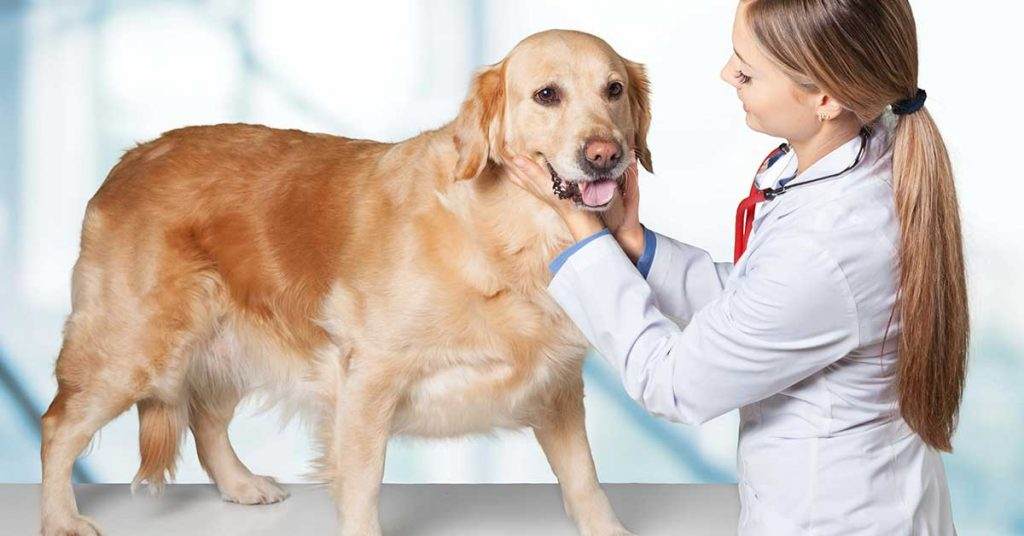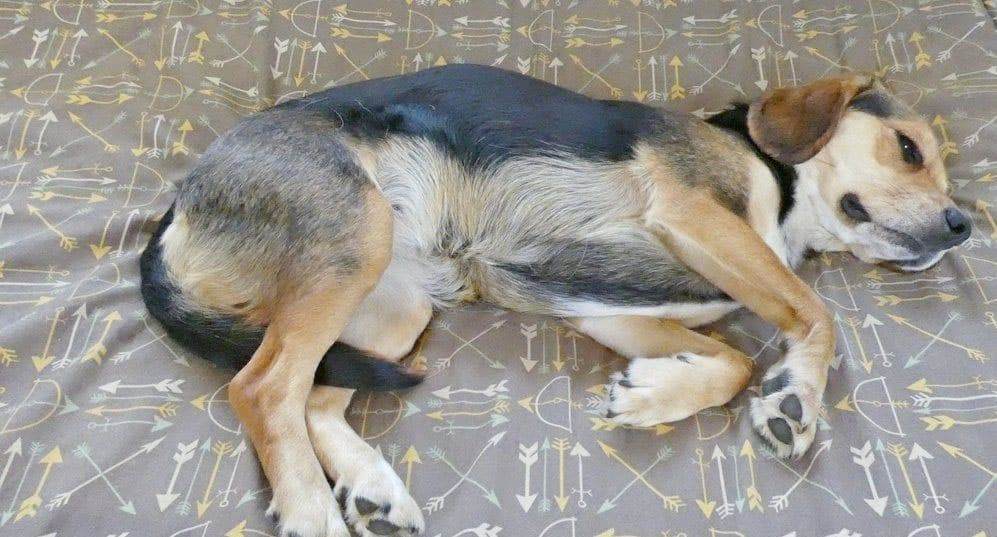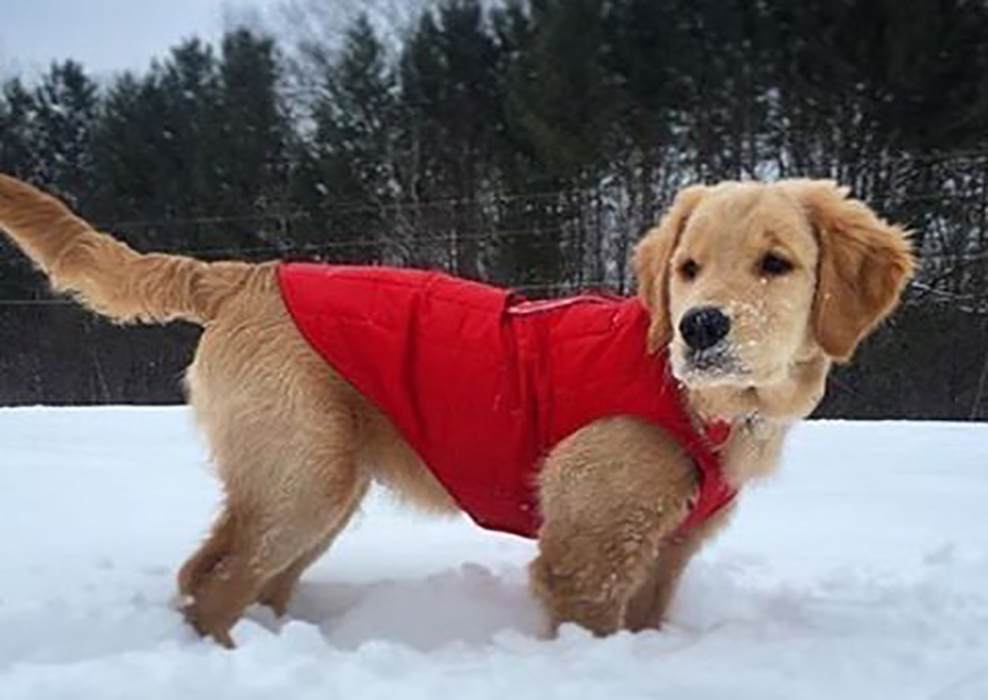Constipating ranks as one of the most prevalent digestive problems in dogs. It is signified by inability or difficulties in bowel movements in the affected animal. The problem can affect dogs of ages, and breed.
Though constipation may not present as a serious problem in most pets, it’s wise not to ignore the condition. If left unattended, the problem can result in severe health problems in the future such as vomiting, loss of appetite, and lethargy.
Since constipation is inevitable in a dog’s life, it’s essential to have adequate knowledge on what to do if the worst happens. As a pet parent, you must learn the signs, symptoms, and treatment options for constipation.
To get a clear picture of a dog’s digestive health, you must take a keen interest in its bathroom habits. The pets pop is an excellent indicator of its digestive health.
In this article you’ll learn more about Dog Constipation: Causes, symptoms and treatment.
If you note any abnormality in the dog’s poop, then you have a reason to worry— something isn’t right with your pet. Similarly, if they are having difficulties to poop, consider this as a danger sign.
Some of the minor cases can be treated at home, but if you note any serious symptoms, you will have to take your dog to the vet.
How frequent should a healthy dog poop?
Though the frequency of your dog defecating relies on several factors, the main trigger for the poo is eating. If you’re a close companion of your pet, you’ll notice that the dog will go to the bathroom every time they eat; vets attribute this to what we call ”gastro colic reflex.”
The nerves in the stomach closely relate to those in the colon, thus the presence of foods in the stomach trigger this reflex that prompts those dogs to empty the contents in the colon.
According to Dr. Orla Mahony, an assistant professor of vet medicine at Tuffs University, healthy dogs should defecate one to three times each day, with the frequency affected by several factors.
In her definition for constipation, she highlights that a dog that registers a decrease in the ability to poop, pass hard, and dry feces and experiences difficulties in passing the poo can be regarded to be constipated.
What is the cause of constipation in dogs?
Just like humans, aging dogs record more cases of constipation compared to puppies or young dogs. Constipation isn’t related to the dog’s breed or size.
The leading cause of constipation is ingestion of substance the pet should eat.
For example, if your dog chews toys or pieces of cloth, the probability of developing constipation is high. Any indigestible or irritable substance will trigger constipation.
Secondly, electrolyte imbalance and dehydration also ranks as a common cause of constipation in dogs. It essential to make sure your pets have an adequate supply of clean, fresh water — most importantly, during the hot months of the year.
Since the dogs lose lots of water due to heavy panting in summer, it’s likely your dog will be dehydrated; thus, its stool will harden, making it difficult to pass the poop.
Poor-quality commercial dog’s foods are another common cause of constipation in dogs. Most of these low-quality dogs’ feeds have questionable ingredients besides lacking the vital nutrient required for a healthy gut.
High-quality dogs diet should comprise high fiber and fresh vegetables to guarantee soft and easy to pass stool.
If neither of the above mention causes seems to be the cause of your dog’s constipation, then your dog might be lacking exercise.
Do you know exercise is essential for bowel movement in both animals and human? Try it, and you’ll concur with me. Consider taking your pet for walks among other suitable exercises — you’ll be amazed by the results.
When your dog ingests large non-food objects such as bones, these substances can obstruct the digestive tract, and the dogs can pass stool usually. If this is your case, you need to consult a vet if the situation doesn’t resolve in a day or two.
Any time you note your dog has ingested a large object that has led to obstruction, you need to pay serious attention to this since it can be fatal.
Also be on the check for intact male dogs, when they are aging their prostate enlarges compressing the bowel and to an extent creating an obstruction. This problem can be quickly resolved if you visit your vet.
When hernias develop in the dog’s rectum adjacent to the anus, they can be a cause for constipation in dogs. The hernia will project into the rectum creating an obstruction, and the dog will have difficulties passing stool. The condition can be corrected via surgery by a vet.
Some dogs develop neuromuscular disorders or poor muscle tone that limit the ability of their body to eliminate waste from the gut. As a result, the stool in the system hardens as a result of staying long in the body due to loss of moisture.
The dog finds difficulty passing the stool, and the condition becomes very painful; thus, the dog will avoid passing stool. In case of noting such symptoms in your dog, contact your vet immediately.
If constipation clears in hours, it’s an indication it was just a mild form. Watch out for chronic constipation that lasts for several days; it’s an indication of an underlying serious problem like:
- Worm infestation
- Metabolic conditions
- Colon disease
- Issues with the anal gland
- Prostate gland issues
- Psychological disturbances
- Tumors in the gut
- Spinal injuries
- Hernias
- Kidney disease or
- Effects of medication
These form the basis of constipation in dogs. One or several factors come into play to trigger the condition.
Symptoms of constipation in dogs
It’s impossible to miss the signs and symptoms of constipation in dogs.
Though a healthy dog may produce stool only one day, the frequency of defecating relates to the number of times the dogs feeds each day. If you note the following signs in your dog, it’s evident that the dog is experiencing constipation.
- Hard, small, and dry feces: If your dog has constipation, they may be able to pass stool several times in a day. But you must recognize that his feces will be small .dry hard balls. The sigh is an indication of an underlying problem that needs quick attention. The size and shape of the wastes are as a result of dehydration and reduced intestinal movements.
- Pain, difficulty or straining passing stools: If your dog has problems passing stool, it’s essential to visit your vet for a checkup. Since the stools are dry and hard or the colon might be obstructed, the dog will find difficulties defecating.
- • No feces: You have enough reasons to worry if your dog has gone for two to the days without passing any stool. This situation can be fatal, thus a need to visit your vet immediately.
- Decreased activity/ appetite: Though this sign could be an s a result of other underlying problems besides constipation; you can’t rule out this cause unless your vet has confirmed the diagnosis. Since the dog can’t pass to stool, they have a poor appetite, and they’ll seem depressed and inactive.
- Vomiting: Though vomiting is more prevalent in constipated cats, it also occurs in dogs. Your vet will confirm if constipation is the cause.
- Small volumes of liquid stool: If you note your dog is passing out ribbons of soft feces or little bits of liquid stool, it may be an indication that the dog is constipated. In this case, the solid, immovable mass of poop has blocked the intestinal passage, and only these small bits can escape to the anus.
- Hard colon: Upon palpation of the abdomen, you can feel hard mas in the gut; this is an indication the dogs are experiencing constipation.
- Increased squatting: when the dog is unable to pass stool, they’ll opt to be frequently squatting due to pain and discomfort in the body. Any change of behavior in your dog should be a reason to worry.
- Dog circling or scooting on the ground: Due to pain and discomfort, a constipated dog will show queer behaviors. You may also notice the dog wailing when you touch the abdomen or lower back.
- Weight loss: weight also may result if constipation is prolonged.
Always be keen on your pet’s behaviors and take the necessary action if any strange sign is seen. If it’s a mild case of constipation, you resolve the problem at home, but if the situation isn’t resolved in a day or two, you’ll need to proceed to your vet for diagnosis and treatment.
Sign of chronic constipation in dogs
A healthy dog will develop constipation that will last for a day or two. But once you note constipation in your dog, you must take a keen interest in the pet since if the condition lasts for more than three days, it could be suggesting as serious health condition that requires the attention of a vet.
Thus if constipation doesn’t improve in the expected time, you must seek the help of a vet to diagnose the condition because prolonged constipation can be life-threatening to your dog.
Consequently, if the condition resolves in a day or two and then recurs, there is a need to visit a vet. Recurrence could be suggesting a severe gut problem or a change of the pest foods or lifestyle.
Obstipation is a term used to refer to chronic constipation— it’s a serious condition that means that the dog can’t pass out poop without assistance. In this case, the colon enlarges to create space for the hard, dry feces.
The dog will, in turn, be very uncomfortable and will be trying to pass stool by all means. If no intervention is initiated, the dog will lose appetite and become lethargic besides vomiting.
The vet will confirm the severity of the case and institute the right remedy such as an enema to facilitate the expulsion of the colon contents, IV fluid to hydrate the pet or at the worst anesthetization to facilitate manual cleanout.
In the most complex cases; surgery may be the only option. The vet might consider colectomy to remove part of the colon and correct the abnormalities. This option is mainly considered for obstipation cases that are as a result of tumors, injuries to the colon, pelvic disorders affecting the colon, or a neuromuscular disorder.
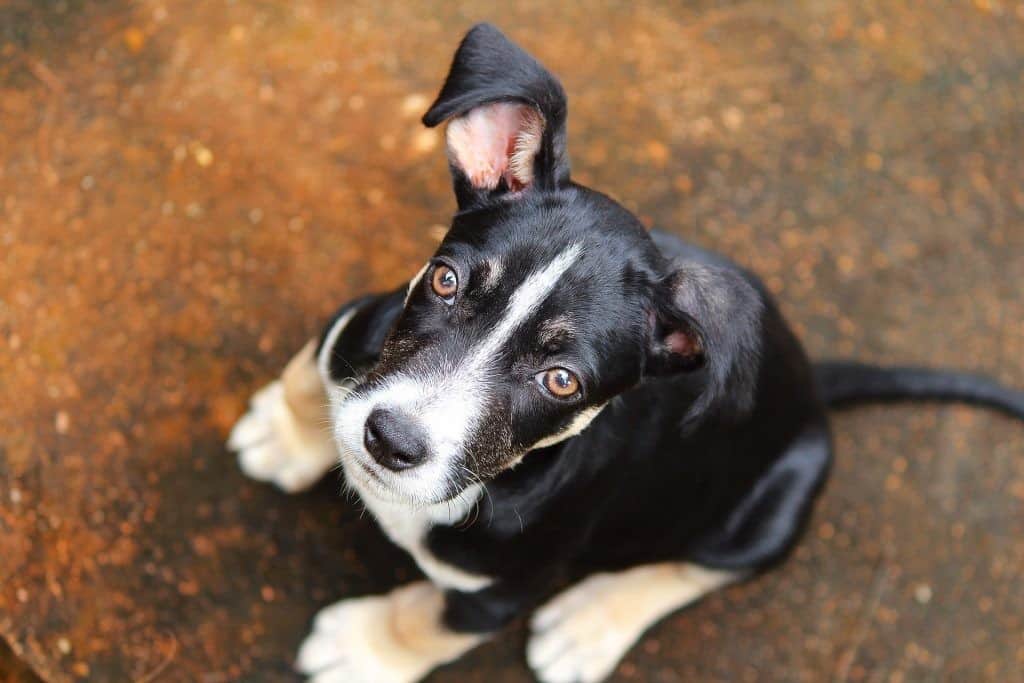
When should you visit a vet?
When constipation doesn’t improve in a day or two, it’s the appropriate time to visit your vet for the dog’s diagnosis and treatment. The vet will assess the dog’s clinical history before proceeding with a physical examination to feel the stool in the colon.
If the physical examination isn’t a sufficient guide, the vet might recommend an X-ray to get a better picture of the condition. When the excess stool is evident from the radiographs, it’s an indication of obstruction.
Based on the dog’s age, the vet might also consider laboratory tests to determine the dog’s blood cell count, organ function, and electrolyte balance, among others.
If constipation proves to be severe, the vet may consider using an enema to remove the stool. Subcutaneous fluids may also be used to assist in hydrating the dog. Additionally, the vet may prescribe medication to help the dogs improve bowel movements such as lactulose.
A majority of dogs do not require hospitalization if diagnosed with constipation, though they’ll be in the hospital for several hours to access treatment. Severe dehydration and other related conditions might need hospitalization.
If constipation keeps on recurring in your dog, your vet might suggest advanced tests to determine the ideal treatment, or they may refer you to a veterinary specialist.
Can constipation be a medical emergency?
In most cases, constipation will rarely result in medical emergencies, but it’s a sign that needs critical attention. If the dog can’t release poop for long, this can result in a medical emergency.
Additionally, if the dog hasn’t been able to release poop for several days, this can result in obstipation. The backup of feces in the dog’s body may require surgery or the dog will be put under anesthesia to remove the pop from the colon.
If constipation remains unattended to for long, toxins and bacteria will gain entry into the bold resulting in sepsis—this is a severe condition that can lead to hospitalization r even death.
Remedies for constipation in dogs
The best way to counter constipation in your dog will be to prevent the condition. These are the most common ways of preventing constipation in dogs.
1) A change in diet
The dog’s diet is critical to its gut health. Most dogs’ foods are filled with additives and non-nutritive fillers that play an insignificant role in the pet’s health. If you consider the dog’s diet as a cause of constipation, switch to high-quality, well-balanced dog foods. If the cases of constipation are more frequent, you may need to start using natural dog foods.
It is also essential to consider the dog’s age. As we had highlighted earlier, older dogs encounter more issues with constipation. If it’s the case with your dog, it may be wise to consider changing the dog’s diet to senior dog food. These diets are specially formulated to counter challenges dogs face in their later years.
2) Milk
Milk also works wonders as homemade therapy for constipation. Add milk into a small bowl and let your pet drink. The milk will work as a laxative, and within a few hours, it will have resolved the problem.
3) Hydration and exercise
Exercise and sufficient hydration are crucial or your dog’s health; they are essential to maintaining a healthy gut.
Your dog must always have access to clean, fresh water. Dehydration results in your dog passing hard and dry feces. If your dog doesn’t like water, you can opt for wet dog foods that contain a high level of moisture. Besides you can add some water or broth to their kibble.
Additionally, consider regular exercise for your dog. The physical movements increase the contraction of gut muscles, thus adding in bowel movement. Schedule walks and other forms of exercise for your pet— these efforts will go a great length at curbing and dealing with constipation.
4) Increase fiber intake
Lack of fiber also provokes constipation in dogs. Including roughage in the dog’s diet will help address constipation. But as you increase fiber intake, you must also ensure the dog gets sufficient hydration. The water will help to soften the fibrous material.
Consider high-quality fiber for your dog to avoid constipation.
Pumpkin and psyllium are the main ways to add fiber to your dog’s food. Other options include bran flakes, green beans, brown rice, apples, and cooked oats.
5) Use canned dog foods
When your dog is experiencing constipation, and their diet comprises kibble, switch to high-quality canned foods for a few days since these foods have adequate moisture that will be helpful to the dog’s digestive system. The foods will assist the dog in moving bowels faster.
6) Include a little oil in the dog’s food
If you have used hydration, exercise, and fiber to improve constipation and you can see any reasonable results in three days, change the trick and add some little oil in the dog’s diet.
Healthy oils will work magic to assist in lubricating the dog’s digestive tract. A teaspoon of oil will work. Avoid adding excess oil to the dog’s foods since it may trigger diarrhea.
Olive and virgin coconut oil are the best options for minor cases of constipation. Add these oils to the dog’s foods at least twice a day.
7) Stool softener, laxatives, and digestive supplements
If the previous methods haven’t yielded any fruits, it time to try out stool softeners, laxatives, or digestive supplements. These substances are available over the counter. Ask for direction on how to use these substances.
The digestive supplements include probiotics that will create the right balance in the gut. The can be used to treat and prevent constipation. Fiber supplements such as those made from psyllium husk can also help counter constipation.
Lastly, you can use emollient laxatives— they work in a similar way to coconut and olive oil to lubricate the gut.
Ways of preventing constipation on dogs
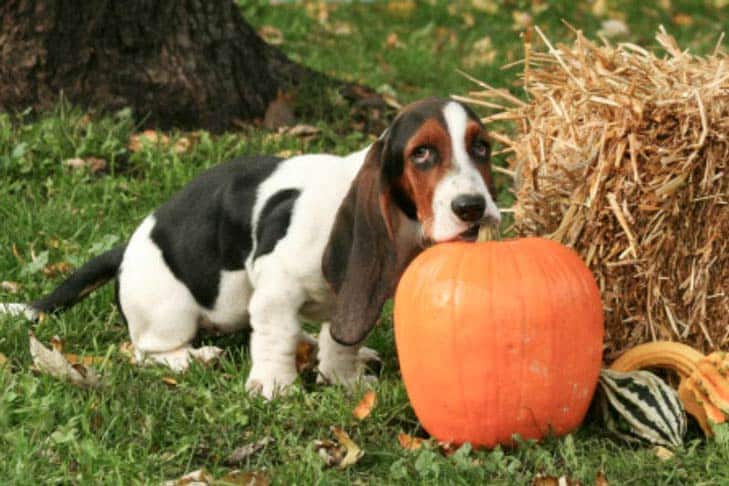
These simple ways can work miracles to relieve your dog from constipation.
- Does the dog like chewing bones? Understand these bones are a significant cause of constipation on dogs. If your dog likes chewing bones, you can substitute these bones with nylon chew toys.
- Know the signs of constipation in dogs. Ask your vet to train you on how to feel your dog’s abdomen to detect constipation so that you can take the appropriate corrective measure in time, including visiting the vet. This will prevent complications arising from constipation.
- Ensure your dogs have aces to clean drinking water at all times, especially in hot weather. If not, make sure they have access to shade and fluids that will prevent dehydration such as broths.
- Work with your vet to formulate a high-fiber diet for your dog. As we have discussed earlier, sufficient fiber is vital for your dog’s digestive health.
- Depending on your dog’s breed, create a satisfactory exercise routine. Walks and other forms of exercise are essential to your pet’s digestive health.
Now you know, any time you note strange behaviors in your dog; it’s time to check for constipation. If the condition seems worse, after implementing home remedies for a day or two, visit your doctor for proper diagnosis and treatment.
References
- https://europepmc.org/abstract/med/7203371
- https://www.cell.com/trends/pharmacological-sciences/fulltext/S0165-6147(98)01278-4
Table of Contents
